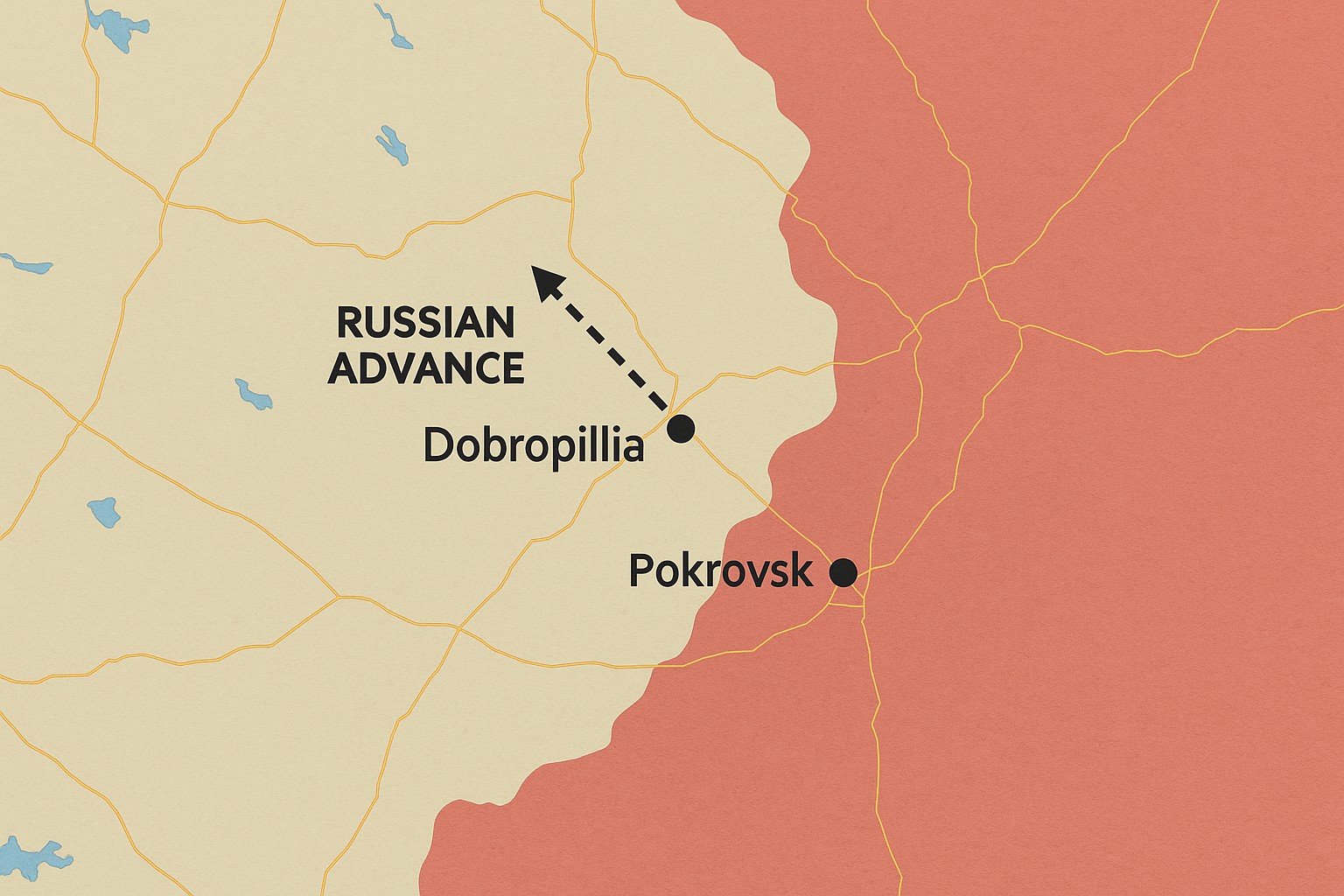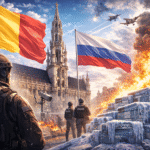A sudden Russian advance on Ukraine’s eastern front has sparked alarm and frustration in Kyiv just days before a planned summit between U.S. President Donald Trump and Russian President Vladimir Putin. The talks, scheduled for Friday in Alaska, are expected to focus on ending the war, with Putin likely seeking to consolidate battlefield gains.
Significant Russian Gains
Ukrainian and Western military sources report that Russian forces have pushed nearly 15km forward in recent days along a narrow corridor near Dobropillia, a coal-mining town that has become a critical logistics hub north of Pokrovsk — a Ukrainian stronghold now nearly encircled by Russian troops.
This advance threatens to sever a vital supply route linking Dobropillia to Kramatorsk, the de facto capital of Ukrainian-held Donetsk region. It could also allow Russian forces to bypass newly built fortifications, marking one of Moscow’s most significant territorial gains in the past year.
Zelenskyy Links Offensive to Summit
President Volodymyr Zelenskyy confirmed the breach on Tuesday, describing the situation around Dobropillia as “the most complicated” on the frontline. He said Russian troops had advanced about 10km without heavy equipment, relying solely on small arms, and argued the move was timed to influence the Alaska talks by creating the impression that “Russia is advancing while Ukraine is losing ground.”
Zelenskyy expressed frustration over international pressure for a ceasefire that could involve territorial concessions, insisting Ukraine could not withdraw from its eastern defences. “Pulling back would hand Russia fortified cities that could become staging grounds for future offensives,” he warned.
Chaotic Frontline Conditions
Ukraine’s General Staff has dispatched reinforcements to the Pokrovsk sector, including elite Azov National Guard units tasked with blocking further Russian advances. Officials described the situation as “complex and dynamic,” with Russia sustaining heavy losses but still pressing forward.
However, military analysts and soldiers say the reality is more dire. DeepState, a war monitoring group linked to Ukraine’s defence ministry, reported “chaotic” conditions, with Russian forces exploiting gaps in defences before consolidating positions.
Michael Kofman, a senior fellow at the Carnegie Endowment for International Peace, said the breakthrough was unsurprising given Ukraine’s lack of cohesive defensive lines and warned the situation could deteriorate further.
Mounting Criticism from Within Ukraine
Prominent Ukrainian military figures and volunteers have voiced sharp criticism, citing months of relentless Russian assaults, growing drone strikes on supply lines, and acute manpower shortages that have left defensive positions undermanned.
Taras Chmut, founder of the Come Back Alive military support charity, called the crisis “the result of actions or inaction” that had been flagged for 18 months. Bohdan Krotevych, a National Guard lieutenant colonel and former Azov brigade chief of staff, described the Pokrovsk–Kostyantynivka line as “complete chaos” and warned that “a stable line of combat contact… effectively doesn’t exist.”
The Centre for Defence Strategies, a Ukrainian security think-tank, noted that if Russia continues its northward push from Dobropillia, it could jeopardise the defence of Druzhkivka and Kostyantynivka. Some observers attribute the breakthrough less to new Russian tactics and more to Ukraine’s overstretched defences.
As one Ukrainian serviceman, Stanislav Bunyatov, put it on Telegram: “The entire defence line is like a sieve.”








